“In an intricately devised plot, written in her definitely elegant style, Miss Heyer triumphs once again in her earlier metier. The duplicate-bridge party given by a dubious social-climbing hostess is the scene for double murder. Inspector Hemingway is at his rueful best in sorting out the grab-bag of ill-assorted characters, all of whom have very good reasons for not being entirely co-operative. In attempting to beat the Inspector at his own game, the reader has no easy task, particularly as the second victim seemed the logical choice in accounting for the first murder. Duplicate Death is an intriguing story.”
“Clue Works” Bestsellers 29, 15 June 1969. Review of the 1969 USA Dutton edition.
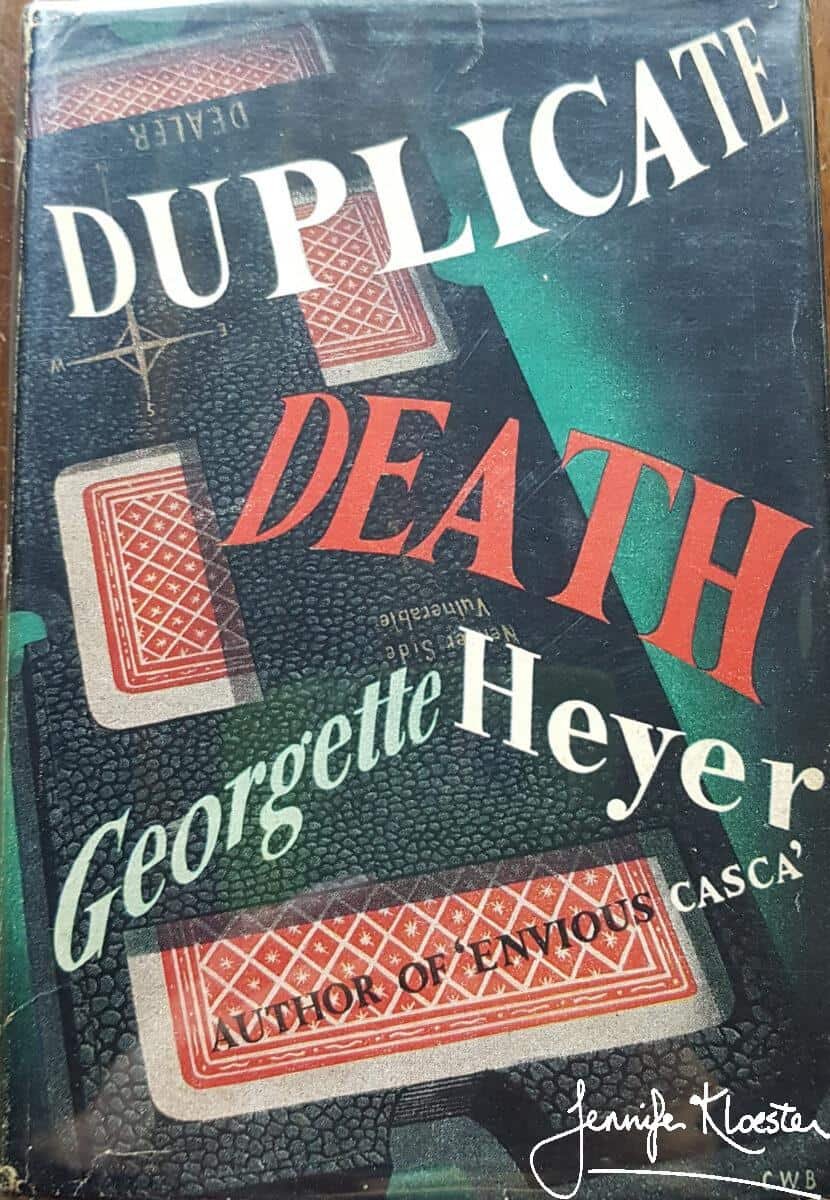
A rare sequel!
Late in 1950, Georgette Heyer began writing a new novel. For the first time in almost ten years, she had decided to write a murder mystery and, unusually for her, she chose to make it a sequel. In her long career, Georgette wrote only a handful of sequels – and not all of them entirely met readers’ expectations of what a sequel was meant to be. These Old Shades was originally intended as a sequel to The Black Moth, but it may more accurately be described as a sort of reinvention; Devil’s Cub is definitely a sequel in the accepted sense to These Old Shades and is an eminently satisfying new chapter in the lives of the Alastairs. Georgette brought Dominic Alastair on stage again in An Infamous Army, which she described as ‘not precisely a sequel’ and later admitted ‘that Dominic couldn’t have had grand-children of mature age in 1815’. Still, An Infamous Army is a sort of sequel to Devil’s Cub and is definitely a sequel to Regency Buck. In An Infamous Army we again meet the main protagonists from Regency Buck, Lord and Lady Worth, as well as several other characters from that novel. In 1942, Georgette had planned to write a sequel to Penhallow in order to tell Bart’s story, but when Penhallow did not achieve the suces fou for which she had hoped, she dropped the idea. Although, by 1950, Georgette had thought of writing Ferdie’s story from Friday’s Child, that book had not yet come to fruition. Instead she decided to write a sequel to her 1937 detective novel, They Found Him Dead. The new book was called Duplicate Death.

For “Bench and Bar”
By 1950, when she began writing Duplicate Death, Ronald had been working as a barrister for eleven years. His office was in the old and historic Paper Buildings in the Inner Temple at the centre of London’s legal world. Georgette’s hero in Duplicate Death, Timothy Harte, is also a barrister with chambers in Paper Buildings. She offers a description of Timothy and his room there that may well have described Ronald’s own office and even Ronald himself:
“a comfortable room overlooking the garden, which smelt of tobacco and leather, and was lined with bookshelves…An aged Persian rug covered most of the floor, and a large knee-hole desk stood in the window. Young Mr Harte, in the black coat and striped trousers of his calling, was seated at this, smoking a pipe, and glancing through a set of papers, modestly prices at 2 [guineas].”
Georgette Heyer, Duplicate Death, einemann, 1951, p.111.
Ronald, too, smoked a pipe and, as Jane Aiken Hodge perceptively pointed out, “If this was the kind of fee Ronald could command, it is not surprising that every penny his wife earned counted.” Whether that was so or not, Ronald’s profession meant that he, and by extension Georgette, often socialised with “members of the Bench and Bar”. Although Ronald was not an Oxbridge man, he had been to Marlborough and to Dartmouth (where he had been in the same class as Lord Louis Mountbatten), and though his Russian birth and background were somewhat exotic, he was a first-rate golfer and a sound bridge player. These were the sorts of things that mattered in the rarefied world of the Inner Temple and among London’s legal fraternity. In time the Rougiers became friends with lawyers and judges and Georgette discovered, to her immense satisfaction, that she had an enthusiastic readership among Members of the Bench and Bar. Among her most avid readers were Lord Justice Somervell and Sir Edward Anthony “Tony” Hawke. When he died, Lord Somervell bequeathed his entire collection of Heyer novels to the Inner Temple library, and it was for Tony Hawke that Georgette wrote Duplicate Death.
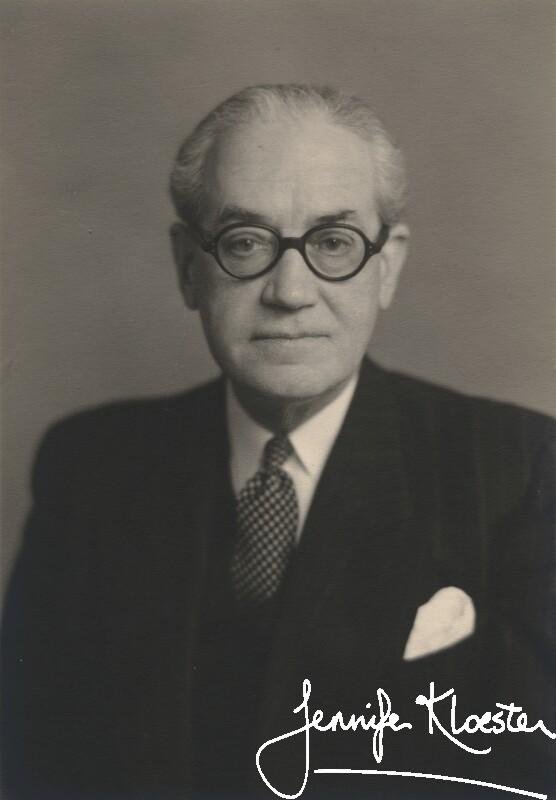
As she told her publisher, A.S. Frere of Heinemann, late in 1950, she had obliged her eminent fan and promoted her detective to a new rank:
Herewith one Detective Novel, between 90,000 &100,000 words. I think I have done better, but I know I have done worse; & I have little doubt that it will sell a treat. Ronald has been carefully through it, to make sure that I have dropped the requisite clues; & he has O.K.’d it. I hope you’ll like it. You have never read Miss Heyer’s Masterpieces of Detection, so I must inform you that Hemingway is a well-known figure to my Fans. When I last wrote of him he was an Inspector, but Tony Hawke, who badgered me for this book, says he is now a Chief-Inspector. So I dutifully made him one.
Georgette Heyer to A.S. Frere, letter, 10 December 1950.

A delightful domestic scene
Set thirteen years after They Found Him Dead, Georgette opened Duplicate Death with a delightful domestic scene where we again meet Jim Kane, murder suspect in the earlier book, and now happily married to Pat. We learn that he has served with distinction in the Second World War and lost part of his leg in Monte Cassino.
“Mr James Kane rose from the table, with the slight awkwardness peculiar to those who had left part of ther left legs to be decently interred in enemy soil. What Mr James Kane secretly thought of his loss he had divulged to none, his only recorded utterance on the subject being a pious thanksgiving to Providence that he had an artificial leg to raise him, in the eyes of his progeny, above the spurious claims to distinction of their Uncle Timothy.
Georgette Heyer, Duplicate Death, Heinemann, 1951, p.9.
It was rare for Georgette to write about the harsh realities of the war or to give anything other than glib responses in her letters to such things as being bombed or losing a loved one at Dunkirk. That was her nature – stoic in the face of trouble and never wanting her deepest wounds touched. A close reading of Duplicate Death, however, reveals more than usual including a poignant tribute to Jim’s younger brother, Timothy, whom Pat obviously adores: “I shall never forget how angelic he was to me all through that ghastly Dunkirk time, and how he gave up two whole days of his leave to come and see me in that disgusting place I took the children to when you were in Italy.” Timothy, too, has served in the War as a Commando. But it’s not only personal reminiscences of the War which Georgette weaves into the early pages of Duplicate Death. The opening chapter also includes an endearing account of Mrs Kane reading letters from her sons. Both boys are at boarding-school and there is a strong sense that the letters and their mother’s reaction to them are a reflection of Georgette’s own reaction to her son Richard’s letters which he used to write her from boarding-school. Richard was eighteen when his mother wrote Duplicate Death but when he was younger, like young Silas Kane, Richard also wrote to his mama about his sporting achievements, asked her to send him stamps for “swops”, urged her to find some lost item now desperately needed, failed to answer her urgent enquiries about his health and grappled with his Common Entrance Exam.
My son is this day taking his Common Entrance exam, & if the spelling is to be comparable with what I get from him he’ll have to be privately educated. I asked him for the measurements of his trousers, & this is what I got: “Waste (loosly) 27”. It baffles me. I never had the least difficulty in spelling, & feel I’ve bred an illiterate. And yet – when my mother asked me if I remembered a play, saying: “Do you remember the Great Lover?” Richard looked up and said: “Oh, quite one of my favourites! You mean, ‘There you have loved’?”
Georgette Heyer to A.S. Frere, letter, 18 June 1945.
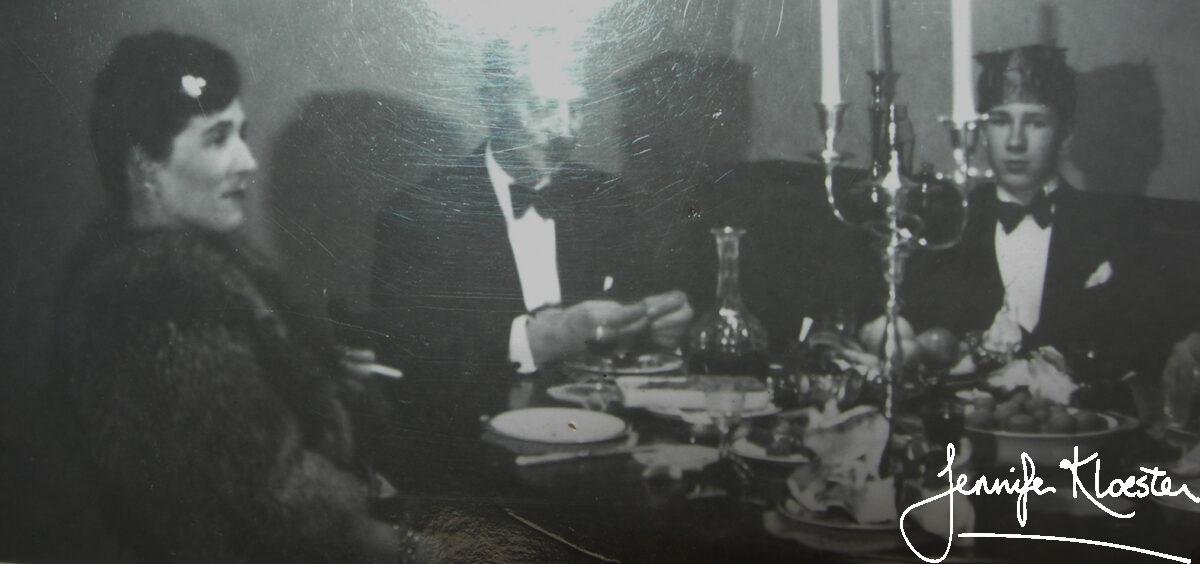
Chief-Inspector Hemingway & “Terrible Timothy”
In 1937, when she wroteThey Found Him Dead, Georgette’s detectives were Inspector Hannayside and his clever assistant, Sergeant Hemingway. The two men were very different but it was Hemingway who remained as the lead detective in the ensuing novels (with the exception of Penhallow) and whose character Heyer developed most fully. Hemingway is clever, witty and perceptive although this is not always obvious to his suspects. He likes to talk, has an excellent memory for faces, is an avid reader (he knows his Dickens) and theatre-goer, and is fascinated by psychology. Heyer herself must have had some understanding of this branch of science for at one point she has Hemingway make a very funny speech in which he mentions Wendt, Munsterburg, Freud and Rosanoff, and tells his suspect that “I know you don’t belong to the Autistic Type, I haven’t had time yet to decide whether you’re Anti-Social, or Cyclothymic, but I daresay I’ll make up my mind about that presently!” Hemingway first encountered Timothy Harte in They Found Him Dead when Timothy was an irrepressible fourteen-year-old with a penchant for American gangster movies. In that novel he became known as “Terrible Timothy”, in Duplicate Death he is now 27, a War veteran and a respectable lawyer. He is also in love with the mysterious Beulah Birtley, secretary to the first murder victim, and a prime suspect in the case. Beulah is an original among Heyer’s heroines and her relationship with Timothy is rocky from the start. She is a mystery, but as with all of the best men in Heyer’s oeuvre, he is clear-sighted and knows a good woman when he sees one. His family are not so sure and Timothy’s mother – making an off-stage reappearance after her cameo in They Found Him Dead – is inclined to strongly disapprove of her younger son’s new flame. The story becomes suitably tangled and the second murder is decidedly more puzzling than the first!
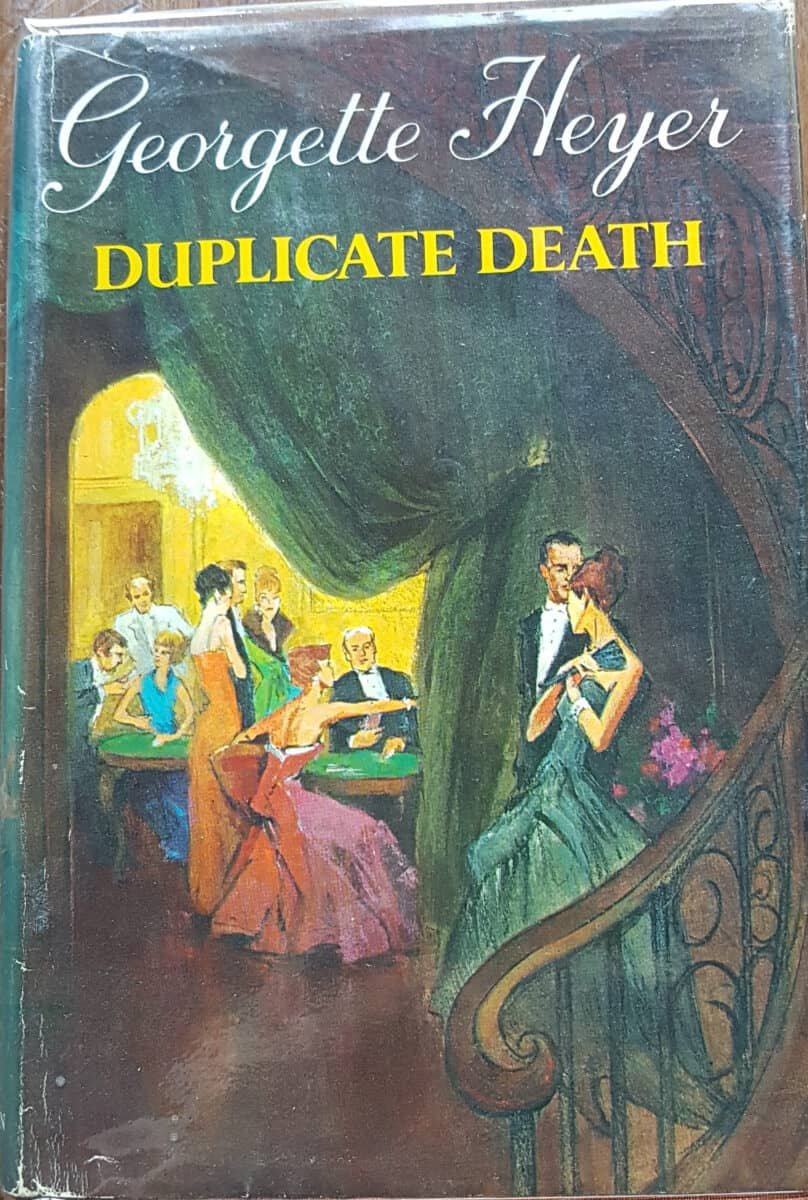
Taxation troubles
It has sometimes been said that Georgette Heyer wrote her novels only for financial gain. This is not true. First and foremost, Georgette was a writer. She was – as Philippa Gregory has said – born to write. She was not only a compelling writer but also a compulsive one. Heyer loved to write and her novels flowed from her brain precisely for that reason. Twice, however, she felt compelled to write something quickly in order to meet the latest tax demand. Duplicate Death and her last detective novel Detection Unlimited were written for that reason. During the Second World War the taxation rate peaked at 99.25% and even after the War the top rate was reduced only slightly to just above 95%. Anyone earning above a certain amount (Heyer cites it as £5000) paid nineteen shillings and sixpence in for every pound earned above that amount. Faced with a large tax bill in 1950, Georgette decided to write a detective novel in the hope of earning enough money to meet the demands of the Treasury. In the years to come, as her income increased, these demands would grow ever-larger and, to Georgette’s mind, increasingly stressful. She loved writing but she did not enjoy writing to pay the taxman such a large proportion of her income! By the 1970s, the high level of taxation in the UK caused many creative people to leave Britain for countries with lower tax rates. At times, Heyer, too, felt the pull of the tax haven, but she was too much of an Anglophile to ever leave her home and country.
“Tax, under the Labour government of Wilson was 93% if you earned a million quid, which we didn’t, you’d end up with 70 grand. So it was impossible to earn enough money to pay back the Inland Revenue and stay here, in England.”
Bill Wyman, Rolling Stones bass player, Stones in Exile, movie, 2010.
Georgette did, however, vent her spleen a little in Duplicate Death in which there are a few acerbic mentions relating to the high rate of tax: “This was shown to be much too large in an epoch when not the largest fortune was permitted to yield its owner more than five thousand pounds yearly…”

A claim of libel!
“Don’t name Mr Lowick, because if you do, I said, I shall refuse to act. Mr Lowick is the junior partner, and when I tell you that the day I went up to see him about the ground-rent he not only kept me waiting for ten whole minutes, but he received me with his pipe in his hand, you will understand why I said what I did. There are limits!”
Miss Pickhill explaining her objections regarding Mr Lowick to Chief-Inspector Hemingway in Duplicate Death, 1951, p.210.
In January 1952, six months after the publication of Duplicate Death, Georgette’s publishers received a letter from Wilkinson, Howlett & Moorhouse solicitors. The letter explained that they had been consulted by a solicitor in Northamptonshire who claimed he had been libelled in Georgette’s latest detective novel. Mr Lowick of the firm of Browne & Wells was much aggrieved that Miss Heyer had made mention of “a solicitor in this book named Lowick, who is not a particularly pleasant character. In particular we would refer to pages 209 and 210.” Unfortunately, as the complainant pointed out, he was at that time the “only solicitor named Lowick to found in the law list”. For many years, Georgette had been in the habit of naming her characters – in both her contemporary and historical novels – after villages in England and Lowick was no exception. Located in Northumberland not far from the Scottish border, she very likely saw the village’s name while driving up to Greywalls in East Lothian for her annual summer holiday. The village is an ancient one dating back to the twelfth century and it would likely never have occurred to Georgette that anyone reading her novel would equate one of her very minor characters with themselves. Mr Lowick, however, reported that Duplicate Death had brought him “a surprising amount of unpleasant publicity” and demanded an apology. Heinemann sent a prompt and polite response, agreeing to change the name in future editions. Louisa Callender, who was now Georgette’s chief correspondent at Heinemann, offered some suggestions for a replacement: “Tengon, Engrid, Rickon, Denoel, Eltons, Lundun” and asked Georgette if Ronald would please check to see if any of them were in the Law List. Georgette wrote back politely but firmly:
“I hate to offend you, but I never saw a more improbable lot of names than those you’ve sent me for poor Mr Lowick. I will bend my mind to this world-shaking question, remembering (for I have Thorpe’s book on Printing, and Proof-Correcting, which tells me ALL about these things) to choose only six-letter names.”
Georgette Heyer to Louisa Callender, letter, 5 March 1952.
In the end the offending name was not changed and the paragraph still stands in every edition since the first. An oversight perhaps or a convenient publishing decision? There is no record that Heinemann ever heard from Mr Lowick again and so the matter dropped.
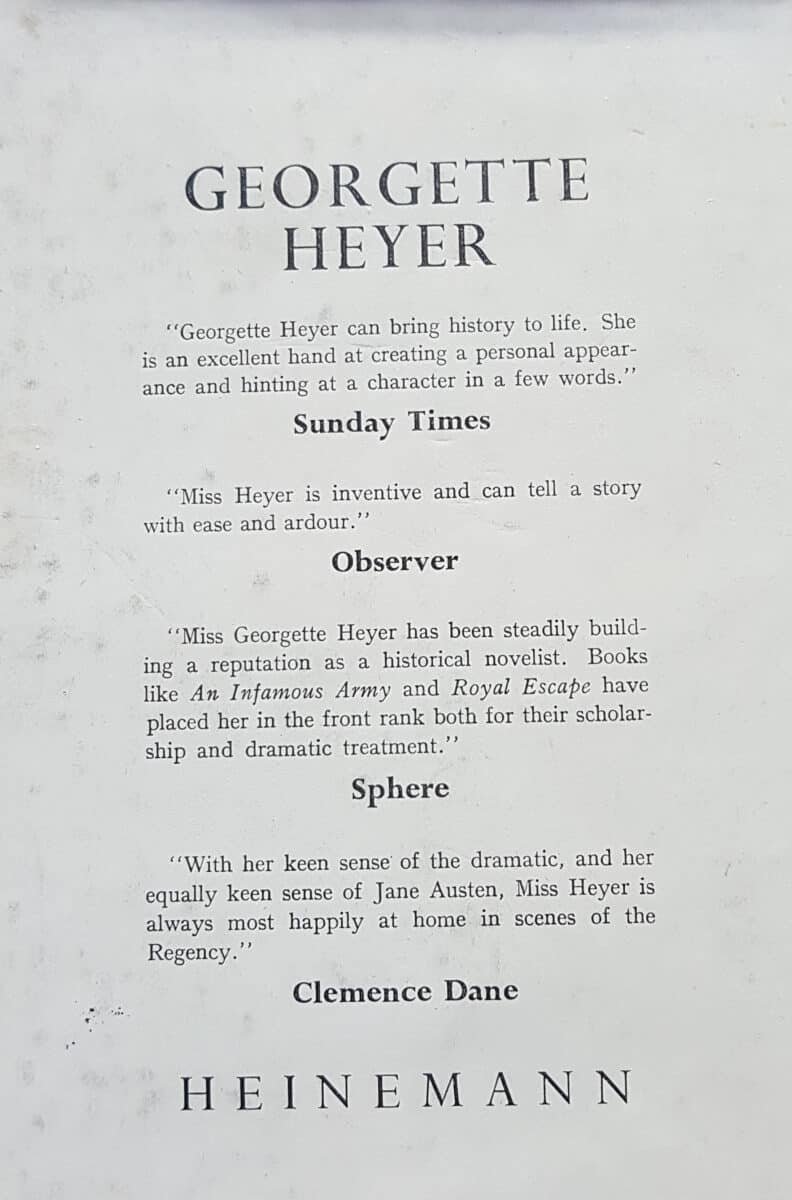
Collaboration
Duplicate Death proved a solid seller with a pre-publication subscription of 25,000 and sales in its first week of 5,000 copies. Georgette was pleased with the figures, although they were considerably less than for her Regencies. She had enjoyed writing this murder mystery with its nod to Ronald’s professional life and to their legal friends, but she had also done it to help pay her tax. It would be her second-last collaboration with with Ronald, of whom she said in relation to her detective novels: “I do these things with the assistance – and ONLY with the assistance of Mr G.R. Rougier”. ButGeorgette’s historical fiction was becoming ever more popular and he was increasingly busy at work. Two years later Georgette Heyer would publish her last modern detective novel, but she would not give up the element of detection just yet.





2 thoughts on “Duplicate Death – “an intricately-devised plot””
What a ‘nourishing’ as well as an entertaining read, Jen! I havent yet read that particular book of Ms Heyer’s but I can see that I really need to for my soul’s sake.
I have during my life had aspirations to be a ‘writer’ but, when faced with your excellent blogs, bios and novels, let alone Ms Heyer’s work, I am glad I kept to the shadows and stuck to psychologising others and myself. A rueful reflection: I hope I have been more successful with my work with others than I have with myself 😉
I reflect also on the tricky times in life Ms Heyer and her family found themselves in. the pressures must have been very great yet she still managed to produce work that delights us all years later.
Thank you very much!
Hi Sharman, I’ve been away and have just read your lovely message. Many thanks for your kind words and I definitely don’t think you should be put off from writing if that’s something you’ve long wanted to do. You can never know what you’ll say on the page until you start writing and I suspect you have many worthwhile things to say. BTW, I suspect that all writers are intimidated by other writers’ works – I know I am, but you do your best anyway. I’m glad to have made a small contribution to the literary world and like you I revel in Miss Heyer’s many works. Thanks so much for posting.